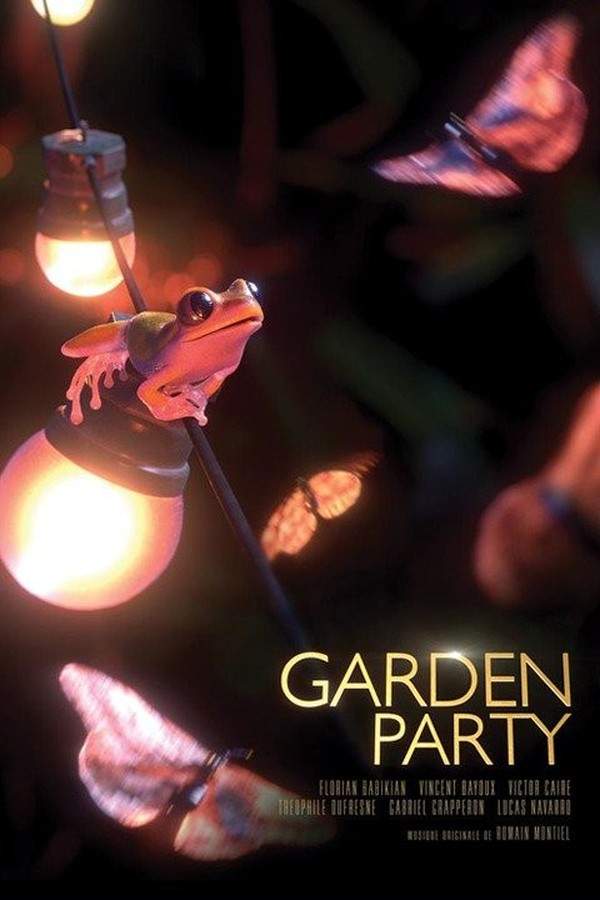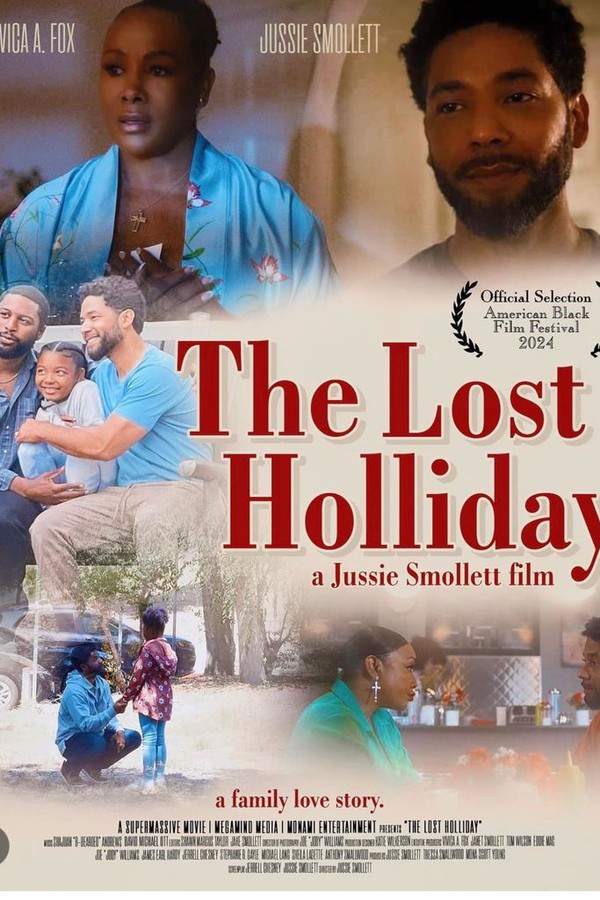
The Hanging Garden
Year: 1997
Runtime: 91 mins
Language: English
Director: Thom Fitzgerald
After a decade away, William—once an overweight, troubled teenager—returns to the family house in search of home. He left without a word, now a fit, well‑adjusted gay man living in the city. The reunion forces the ghosts of his painful adolescence to surface, leaving him increasingly unhinged as old wounds color the present lives of his family.
Warning: spoilers below!
Haven’t seen The Hanging Garden yet? This summary contains major spoilers. Bookmark the page, watch the movie, and come back for the full breakdown. If you're ready, scroll on and relive the story!
The Hanging Garden (1997) – Full Plot Summary & Ending Explained
Read the complete plot breakdown of The Hanging Garden (1997), including all key story events, major twists, and the ending explained in detail. Discover what really happened—and what it all means.
Sweet William’s story unfolds through a haunting blend of memory and possibility, anchored in a life lived between stark reality and dreamlike interference. At the center is Sweet William, a figure who appears as both a thin adult and a fat teenager, sein-like halves of one life that refuse to stay separated. The pivotal moment comes from a teenage crisis: his grandmother catches him in a sexual encounter with his bisexual friend Fletcher, and the revelation outs him to his dysfunctional family as gay. This act of exposure sets off a chain of consequences that ripple through generations, testing loyalties, trust, and the fragile ties that hold a family together. Fletcher is a catalyst, and his fate is entangled with the stubborn, often painful love of those who try to protect Sweet William from the harm they fear.
The film spirals through a dreamlike logic that mingles choices and outcomes, highlighting themes of life and death, and how two very different paths can lead to surprisingly similar endings. The story is staged with magic realism, presenting a merged reality where boundaries blur and what is possible in the mind can seem as solid as the world outside. The narrative is structured as a triptych, each panel offering a different lens on the same core events and their aftermath, inviting the viewer to weigh whether what happened truly happened or if memory has rewritten it into a new truth.
In the present-day segment, the adult Sweet William returns to rural Nova Scotia for the wedding of his sister Rosemary to Fletcher, a moment that should mark a simple family celebration but instead becomes a doorway to the past. On arrival, he discovers two startling, almost spectral presences: his younger selves still walking around the family home, and a newly revealed sister, Violet, a pre-teen who was born after he left and whom he has never met. The wedding thus becomes a fulcrum where time loosens its grip and the past presses forward into the present, challenging the adult William to acknowledge what remains unresolved.
The second segment takes us back to the teenage years, tracing the events that culminate in the night of crisis. It maps Sweet William’s close bond with Rosemary and exposes Iris, their mother, as she wrestles to shield her children from Whiskey Mac, the alcoholic father who embodies a threatening, destabilizing force in the family. The past also reveals the origins of Violet and the tangled family dynamics that led to the moment of exodus and, ultimately, the tragedy that follows. The more we learn, the more we understand how the trauma is shared, passed along, and refracted through each generation.
Returning to the present, the final act brings the living adult and the dead teenage Sweet William into the same shared moment of reality. The film makes it clear that the dead teen’s body is not merely a memory or a product of wishful thinking; the rest of the family can still see the hanging figure in the garden tree, a stark testament to the wounds that refuse to die. This convergence of life and death raises the question of what really happened and what the family chooses to believe, leaving a lingering sense of ambiguity that invites multiple readings.
Throughout these shifts, the film maintains a calm, observing tone that allows the audience to parse danger and tenderness without overstatement. It treats its characters with a quiet dignity, even when their actions are fraught with guilt or fear. The grandmother, Dusty Miller, is a figure of authority who triggers a cascade of consequences, and her intervention—like the fateful exposure—shapes the paths that follow. Dusty Miller is part of the web of relationships that the story maps, from Lily-white memories to the darker edges of memory’s reach.
The father, Whiskey Mac, embodies a corrosive force that complicates love and trust within the family. Whiskey Mac is not merely a symbol of weakness; he is a real presence that the characters carry with them, influencing choices and amplifying the sense of danger that threads through the family’s history. The mother Iris, tirelessly trying to shield her children, becomes a pillar of resilience and fragility at once, and Iris is a living reminder that protection can falter under pressure, yet still be an act of love.
As the narrative folds back on itself, the contrast between the present and past deepens. The film’s triptych structure invites viewers to compare the outcomes of different life choices and to consider how memory can stretch or compress time, offering alternate versions of what is real. The tension between what happened and what is remembered is not resolved by a single answer; instead, the film invites us to inhabit the space where interpretation lives, where two readings of a single life can coexist and coexistence itself becomes a kind of truth.
In this unfolding mosaic, the idea of virtually concurrent lives—the living adult Sweet William and the dead teenage Sweet William—gives the story a dreamlike gravity. The merging of timelines creates a sense that the past is never truly over and that present moments can contain the seeds of a different fate. The film’s emotional center rests in the persistence of family ties—how love, fear, guilt, and care cycle through generations and shape who we become. The result is a lyrical meditation on responsibility, memory, and the ways in which one life can touch another even long after the moment of loss.
As Fitzgerald might suggest in this reflective tale, the events of the film carry two possible interpretations. The narrative pushes us to ask whether Sweet William left home and has only now returned, his memory haunting the family, or whether the homecoming is a fantasy born from his unresolved suicide as a teenager. The dialogue remains deliberately open, and the film’s beauty lies in its ability to hold both readings in a single breath.
To every event in the film there are two interpretations. He left home and now he’s back and his memory is haunting them. Or he did commit suicide when young and his homecoming is a fantasy?
Last Updated: October 05, 2025 at 11:21
Unlock the Full Story of The Hanging Garden
Don't stop at just watching — explore The Hanging Garden in full detail. From the complete plot summary and scene-by-scene timeline to character breakdowns, thematic analysis, and a deep dive into the ending — every page helps you truly understand what The Hanging Garden is all about. Plus, discover what's next after the movie.
The Hanging Garden Timeline
Track the full timeline of The Hanging Garden with every major event arranged chronologically. Perfect for decoding non-linear storytelling, flashbacks, or parallel narratives with a clear scene-by-scene breakdown.

Characters, Settings & Themes in The Hanging Garden
Discover the characters, locations, and core themes that shape The Hanging Garden. Get insights into symbolic elements, setting significance, and deeper narrative meaning — ideal for thematic analysis and movie breakdowns.

Similar Movies to The Hanging Garden
Discover movies like The Hanging Garden that share similar genres, themes, and storytelling elements. Whether you’re drawn to the atmosphere, character arcs, or plot structure, these curated recommendations will help you explore more films you’ll love.
Explore More About Movie The Hanging Garden
The Hanging Garden (1997) Scene-by-Scene Movie Timeline
The Hanging Garden (1997) Movie Characters, Themes & Settings
The Hanging Garden (1997) Spoiler-Free Summary & Key Flow
Movies Like The Hanging Garden – Similar Titles You’ll Enjoy
Falling (2021) Detailed Story Recap
The Garden (1991) Complete Plot Breakdown
Garden Party (2008) Story Summary & Characters
Hanging Up (2000) Full Movie Breakdown
Fair Haven (2017) Full Summary & Key Details
The Lost Holliday (2024) Full Summary & Key Details
Back Home (2019) Film Overview & Timeline
Sunset Cemetery (2020) Plot Summary & Ending Explained
Hanging Heart (1989) Detailed Story Recap
Homebird (2022) Plot Summary & Ending Explained
Lonely Country (2023) Spoiler-Packed Plot Recap
Going Home (1971) Film Overview & Timeline
The Cement Garden (1993) Ending Explained & Film Insights
Hangman’s House (1928) Spoiler-Packed Plot Recap
The Hanged Man (2008) Plot Summary & Ending Explained

















